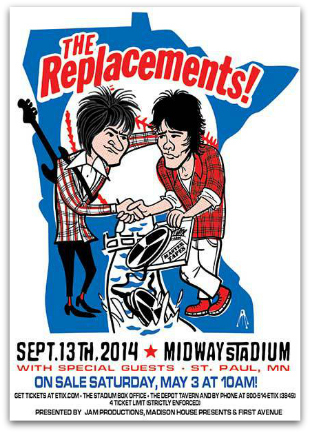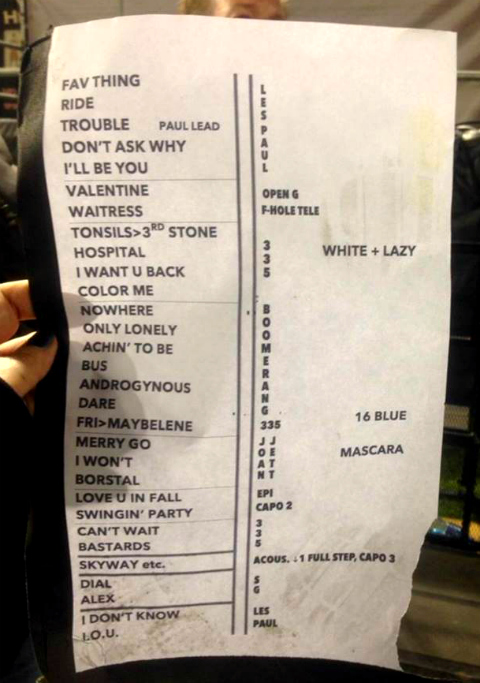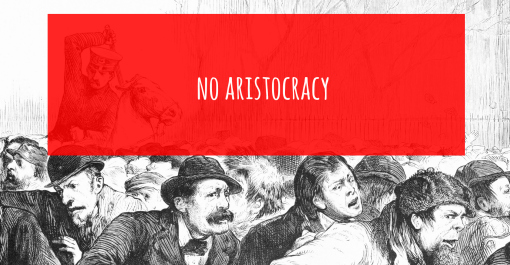About a year ago now, longtime Ann Arbor residents Kathy Sample and Bill Brinkerhoff made the decision to change direction in their careers and dedicate themselves full-time to advancing the local food movement. Their work culminated, a few weeks ago, in the launch of the Argus Farm Stop, a 1,300 square foot, year-round farmers’ market at the intersection of Liberty and 2nd, which they’re hoping will not only encourage more people to eat local food, but make small-scale farming a more financially viable career option in southeast Michigan. Here, with more on what they’re hoping to accomplish with Argus, are Kathy and Bill.
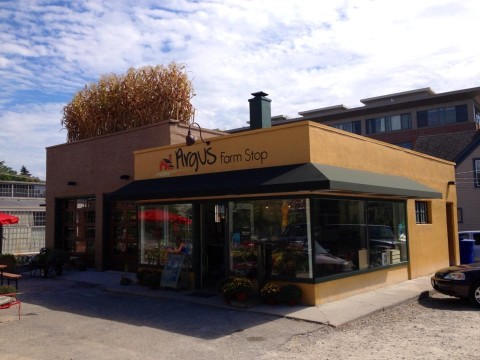
MARK: When I first talked with you about this project, Bill, you were still in the fact-finding stage, making your way around the area, meeting with people, and trying to discern where there were unmet needs in the local food ecosystem. What did you discover having gone through that process?
BILL: Generally speaking, we found two things. First, there was great support and enthusiasm for the idea of growing access to local food. And, second, there was a lack of satisfaction with the current situation. Many people described their strong desire to purchase from local producers, but found it difficult to always make it to farmers’ markets or participate in CSAs. On the producer side, we heard how difficult it was to make a living on a farm. Farmers’ markets and CSAs offer high margins, but they take a lot of time. And selling through other retail outlets often means accepting much lower prices for your goods, and losing control over the way in which those goods are sold. There was great interest, therefore, in finding a way to sell local products in such a way that maintained strong consumer-producer connections, offered higher margins to the producers, and letting the farmers spend more time on the farm.
MARK: And, now that Argus has been up and running for a few weeks, how do you think you’re doing relative to those three objectives?
BILL: We’ve been very pleased with the reception from customers, with many each day making it a point to voice their appreciation for the store and their ability to now shop from their favorite farms every day. For the producers, the sales volumes have been strong, and they’re very happy with the rapid uptake.
 MARK: Kathy, I’m somewhat familiar Bill’s background, having spent some time with him over these past few years, but I know very little about your background and the path that brought you here. What had you been doing prior to this, and how’d you become interested in the local food movement?
MARK: Kathy, I’m somewhat familiar Bill’s background, having spent some time with him over these past few years, but I know very little about your background and the path that brought you here. What had you been doing prior to this, and how’d you become interested in the local food movement?
KATHY: I had a career in marketing and business planning that often took me away from Ann Arbor on business travel, but I’ve always had an interest in local food. I’ve been involved in local agriculture through the school gardens and through the county extension office as a master gardener. I’ve worked on the Burns Park school garden and the Tappan School garden, and see a real opportunity to connect people with local food sources again. As our family has traveled, we’ve found that there is no better way to get to know a culture than to visit local farmers’ markets. When we were dropping our son Ben off at the College of Wooster in Ohio last summer, we came across the Local Roots market, which has really helped change the environment for local food there. And, last fall, together with our business partner Scott Fleck, we began exploring the potential of something similar in Ann Arbor.
MARK: And, Bill, this is something of a shift for you, given that, prior to this, you’d been in the pharmaceutical business. How’s the transition been?
BILL: I used to spend 90% of my time on pharma/biotech work and 10% on local initiatives. Now the ratio is reversed. It is rewarding to be working with the local farmers and food producers, and the customers in our market are people who are interested and involved, so it’s been an easy transition.
MARK: So, tell us about the Argus Farm Stop. What might we expect to find there? What would I see if I were to walk through the front door today?
KATHY: Argus has quickly become a little community meeting space for people who care about local food. The vibe is just great, from my standpoint. It’s really the neighborhood coming in and meeting and shopping. We have a full coffee bar, with both indoor and outdoor seating. (We brew Roos Roast coffee.) As you enter the market side, you will find products from over 60 local producers including meats, dairy, produce and baked goods. We’re really trying to cover all the categories that we can in this small space. There is signage explaining each product, and a single point of check out, which makes shopping easy, and frees the farmers to spend more time on the farm. We have the most talented farmers. They are wonderful people. And, when you come in, you might meet them as they bring in their produce!
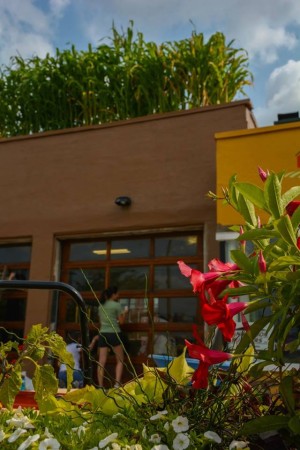 MARK: Why did you decide to locate at Liberty and Second, instead of somewhere else in Ann Arbor, or in a surrounding community, like Ypsilanti?
MARK: Why did you decide to locate at Liberty and Second, instead of somewhere else in Ann Arbor, or in a surrounding community, like Ypsilanti?
BILL: We searched broadly for a location which would have sufficient space and parking, and also be funky, welcoming and accessible for pedestrians and bike traffic. Every time we visited the building at Liberty and Second, where Argus is now, we noticed the large number of people walking by to the residential Old West Side neighborhood, and began to feel that this location would make an ideal home for this store. When people visit the store, they’re amazed at the nice view looking back towards downtown Ann Arbor. The concept of renovating a 1930’s gas station into a new use as a coffee shop and grocery store also held some appeal.
MARK: What kind of outreach have you done thus far with the local farming community?
KATHY: We began discussions last Fall with several of the larger local farms, to ask for feedback on the overall this idea. To a one, they were thoughtful about the concept, encouraging and offered excellent advice on ways we might proceed and things we should consider. We continued and expanded these discussions as the store renovations were ongoing. We had to really keep the conversation going through the process so that they would plan to have product available, and so that they would be comfortable with how things were moving forward.
MARK: What do you have in the way of local meat?
KATHY: It’s all here! We have a great variety of local meat, all raised within a close radius to us. We have worked to provide a variety of choices for customers in each area (beef, pork, poultry, lamb) and currently are carrying names familiar to those shopping in our local farmers markets including Golden Fleece, Steinhauser Farms, Ernst, Black Oak, Biercamp, Harnois, Duerksen Turkey, and we have interest from several other small farms, we are just trying to fit them all in. We also carry Sanilac (heirloom organic Mangalitsa pork) meats, and their dog food. So we’re happy with our meat selection. And we have meat-free protein options, like seitan from Mama MoFoods which is popular, and really high quality.
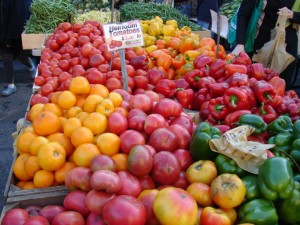 MARK: Are there any holes right now? Are there items, for instance, that you’d like to carry, but haven’t yet found a local source for?
MARK: Are there any holes right now? Are there items, for instance, that you’d like to carry, but haven’t yet found a local source for?
KATHY: We have the basics down. I guess jam is a surprising thing we’re trying to source, as well as salad dressings and oils. It’s hard to source something like cooking oil that you know comes from local corn or canola. And we’re bringing in yoghurt too – there are few small dairies with really good yoghurt! We’re also increasing our prepared food options, as that’s something that has been a big hit. We use Bona Sera Cafe and Harvest Kitchen. Both in Ypsi, and use local ingredients. And they’ve both got excellent cooks!
MARK: Will there be anything at all from outside the region?
KATHY: We’re sourcing exclusively from Michigan producers. The consignment model, and the frequent restocking that’s required, means that there’s a natural limitation on the distance from which our products can be supplied.
MARK: I’m curious about your business model. You mention consignment. Can you go into a little more detail as to how you’ve decided to structure your relationships with suppliers?
BILL: The business model is one where the farmers own and price their goods, and we provide a single point of check out in an attractive retail environment, which is open daily, year-round. The producers receive 80% of gross sales, which is very favorable compared to the other alternatives available to them. Our interest in this model has less to do with economics and more to do with the environment of mutual trust that it requires between the store and the producers. The producers need to trust that we will restock and refresh their displays, and do our best to communicate their stories to customers. And we need to trust that producers will provide abundant, beautiful products to sell in the store. Farmers also need to be present in the store frequently to replenish their supplies. They also care deeply about how their goods are displayed, and this translates into a very unique shopping experience for customers.
MARK: How did you come to settle on this particular model?
BILL: Our mission is to grow the local food ecosystem, and this model does a wonderful job of connecting customers with local producers. Given the volume of deliveries on any given day, customers are bound to meet and interact with producers during their visits to the store. This is exactly the kind of connected model we’re working to build.
MARK: And you think that 20% of gross sales will be enough to sustain Argus?
KATHY: It’s our mission at Argus to make an attractive return for our farmers, attractive enough for them to invest and grow. Based on the experience of Local Roots in Wooster, 20% is possible, as long as you have an additional revenue source, like our coffee bar. In Wooster, they’ve seen their farmers able to expand, and to invest in growing through the winter season, and this is something we would like to see with more of our local farmers. We want them to be successful, and expand their growing seasons.
MARK: So the hope is, since Argus will be open all winter, farmers will build hoop houses, expand their seasons, and keep you well stocked?
KATHY: We share that hope with our customers. We all want a robust, year-round local food options, and our hope is that Argus can help make that happen by serving as a platform.
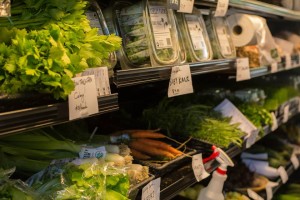 MARK: As you’ve mentioned, Argus is based loosely on a year-round market you’d had some experience with in Wooster, Ohio. What was in particular that struck you about that market?
MARK: As you’ve mentioned, Argus is based loosely on a year-round market you’d had some experience with in Wooster, Ohio. What was in particular that struck you about that market?
BILL: I was struck by the interaction with farmers at Local Roots. On my first visit there, I met a blueberry farmer who explained the difference between blueberries from the first harvest and subsequent harvests. It was a weekday morning, and I wasn’t expecting this kind of experience. On our next visit, we met an egg supplier, who had just picked up a delivery of new chicks for his farm. (They come in the U.S. mail!) Customers want this kind of interaction. They want to feel connected. It’s what attracted us to Local Roots, and it’s what’s bringing people into Argus… We were surprised to learn, by the way, that, in the small town of Wooster (population 28,000), the sales from Local Roots exceeded $500,000… We thought, “Why shouldn’t Ann Arbor have such a wonderful type of store?”
MARK: And are you getting the sense that you’re developing that kind of culture? Are farmers hanging out, and talking with customers?
BILL: Yes, we’re seeing this kind of engagement all over the store. When our farmers are bringing in produce, they’re constantly educating us about the care of that produce, and the customers will often ask them questions, which they’re happy to answer. And the same is true of our meat suppliers, who are always more than happy to tell customers, as they stock up our freezers, about their cows or chickens.
MARK: What’s the response been from others in the local food community, like the Washtenaw Food Hub, the People’s Food Coop, and Ann Arbor Farmers’ Market?
KATHY: Nationally, less than 1% of food is purchased directly from producers. Over 99% goes through traditional distribution channels, where local farmers don’t fare very well. In our discussions with others who work in the local food community, we’ve found an interest in growing this percentage. Our mission is to grow local food, and if Argus demonstrates new approaches, we would be thrilled to see these practices adopted more broadly.
The Washtenaw Food Hub is home to The Brinery, one of our producers. And their commercial kitchen is used by cooks who make other products for sale locally. The Ann Arbor Farmers’ Market has been very supportive. We’ve been working with their manager, Sarah DeWitt, since the “concept” days. She has such a good grasp of how local food can grow.
MARK: That’s the answer I was hoping for, Kathy. With 99% of of food being sold through larger grocery stores, as you say, there’s certainly a huge opportunity to grow the pie for everyone involved in the local food movement. My concern, though, was that there might be some initial pushback from other more established players in the local food movement.
KATHY: I hope not – we should all be moving in a direction to support local producers. Larger stores are trying to cover so many bases with the product lines that they carry that it’s really hard to focus on the small, local supplier. I see that stores often have a “local” display in the produce area, but it’s kind of an island. So much of what’s in a typical grocery produce aisle is from industrial agricultural sources, and, when you make a selection, you’re picking between a local thing and a non-local thing. At Argus ,you don’t have to make that choice. And tt seems to resonate with our customers. They’re having a really good experience shopping here. Maybe they feel more connected to what they are buying. I hope they are!
MARK: You opened your doors in mid-August. How have things been going?
BILL: We‘ve been thrilled with reception by customers, who have been vocal in their support. They really like having a convenient place to shop for local food where people are passionate about what they’re doing. The farmers and producers have also been amazing in the variety and volume of beautiful products they’ve bringing to sell in the market. And our sales reflect that. We recently issued the first checks to producers for their sales over the first 9 days of market operations, which exceeded $22,000… We’re thrilled to be seeing such an immediate impact on economic development in local food.
 MARK: How, if at all, are things evolved since your launch? I realize that it might be too early, but I’m wondering if you’re seeing any signs, for instance, that Argus might motivate growers to diversify their crops more than they might have otherwise? I’m also wondering the data that you’re getting concerning what sells and when might be used to better guide local production. It seems like there’s an enormous opportunity.
MARK: How, if at all, are things evolved since your launch? I realize that it might be too early, but I’m wondering if you’re seeing any signs, for instance, that Argus might motivate growers to diversify their crops more than they might have otherwise? I’m also wondering the data that you’re getting concerning what sells and when might be used to better guide local production. It seems like there’s an enormous opportunity.
BILL: At first we were just learning to keep the shelves stocked. We had such great product, it was really moving. Now we can look at specific things that people are asking for, and see if we might be able to facilitate connections. We’re all learning together. Our customers are beginning to think about what they used to be able to get, like local horseradish, or other interesting things, and they’re telling us. Now, we’re getting to the point where we need to meet with our suppliers to communicate the next steps – what else they can consider growing for us. And what winter will look like!
MARK: I’m curious as to what outreach you may have planned, if any, to segments of the local community that perhaps don’t already make it a point to seek out fresh, local produce. For example, do you have plans to accept Bridge Cards, or provide food for those receiving assistance through federal programs like WIC?
KATHY: Being a farmers market with a single point of checkout, we are ideally situated for pursuing those things, and we’ve got plans to work with a local expert in order to set us up to work with those programs as soon as we’re eligible. Healthy food access is absolutely part of our mission. Double Up Food Bucks is an example of a local program that encourages those on food assistance to shop for fresh produce, and we want to be part of that. And our farmers do too.
MARK: Outside of what we’ve already discussed, is there anything else that you have planned for the immediate future?
BILL: Over the next several months, we’ll continue to fine tune store operations, and plan for the winter version of the market. We have growers who are interested and capable to grow almost year round, and we’re sketching out what our product offerings might look like between now and spring. In addition, we’re planning more activities, like “Farmer in the Store,” for local school groups. We want to facilitate conversations between children and farmers. And we’d like to host music events. But, really, our customers are the best source of ideas for what we can do. And we’ll just keep listening to them.
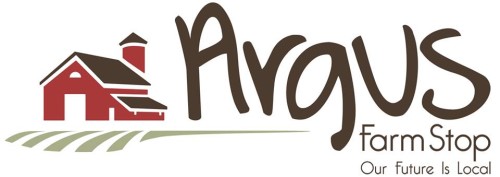
[Follow Argus Farm Stop on Facebook.]



